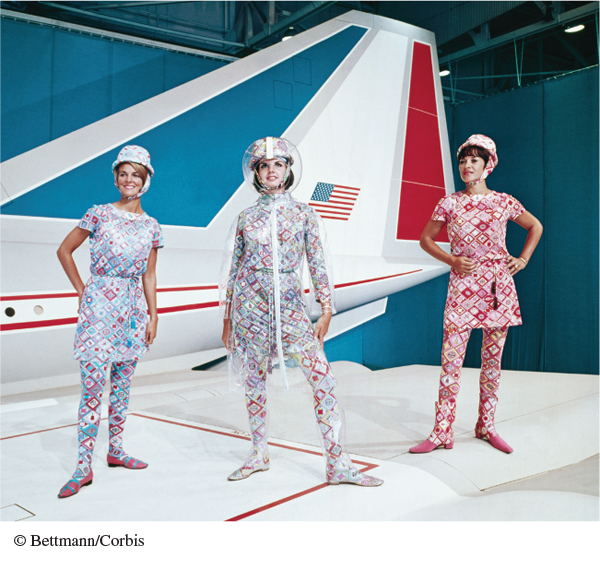A History of Western Society: Printed Page 984
A History of Western Society, Value Edition: Printed Page 945
A History of Western Society, Concise Edition: Printed Page 986
The Affluent Society
The political shift to the left in the 1960s was accompanied by rapid social change across western Europe. A decade of economic growth and high wages meant that an expanding middle class could increasingly enjoy the benefits of the consumer revolution that began in the 1950s (see Chapter 28). Yet this so-
Many Europeans now had more money to spend on leisure time and recreational pursuits, and one of the most noticeable leisure-

Consumerism also changed life at home. Household appliances that were still luxuries in the 1950s were now commonplace; televisions overtook radio as a popular form of domestic entertainment while vacuum cleaners, refrigerators, and washing machines transformed women’s housework. Studies later showed that these new “laborsaving devices” caused women to spend even more time cleaning and cooking to new exacting standards, but at the time electric appliances were considered indispensable to what contemporaries called a “modern lifestyle.” The establishment of U.S.-style self-
Intellectuals and cultural critics greeted the age of affluence with a chorus of criticism. Some worried that rampant consumerism created a bland conformity that wiped out regional and national traditions. The great majority of ordinary people, they argued, now ate the same foods, wore the same clothes, and watched the same programs on television, sapping creativity and individualism. Others complained bitterly that these changes threatened to Americanize Europe. Neither group could do much to stop the spread of consumer culture.
Worries about the Americanization of Europe were overstated. European nations preserved distinctive national cultures even during the consumer revolution, but social change nonetheless occurred. The moral authority of religious doctrine lost ground before the growing materialism of consumer society. In predominantly Protestant lands — Great Britain, Scandinavia, and parts of West Germany — church membership and regular attendance both declined significantly. Even in traditionally Catholic countries, such as Italy, Ireland, and France, outward signs of popular belief seemed to falter. At the Second Vatican Council, convened from 1962 to 1965, Catholic leaders agreed on a number of reforms meant to democratize and renew the church and broaden its appeal. They called for new openness in Catholic theology and declared that masses would henceforth be said in local languages rather than in Latin, which few could understand. These resolutions, however, did little to halt the slide toward secularization.
Family ties also weakened in the age of affluence. The number of adults living alone grew remarkably, men and women married later, the nuclear family became smaller and more mobile, and divorce rates rose rapidly. By the 1970s the baby boom of the postwar decades was over, and population growth leveled out across Europe and even began to decline in prosperous northwestern Europe.